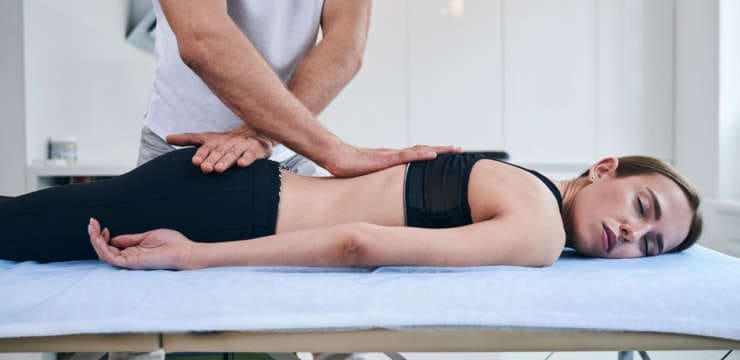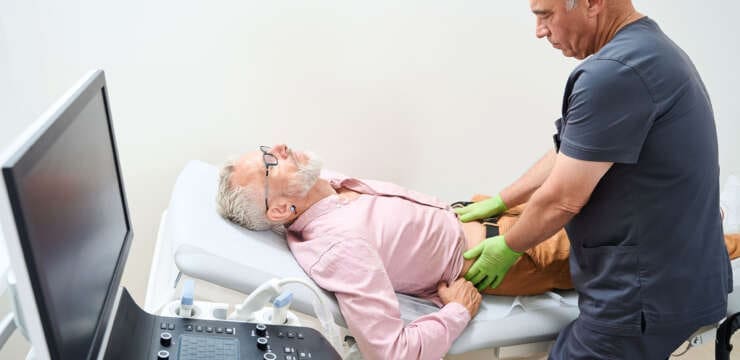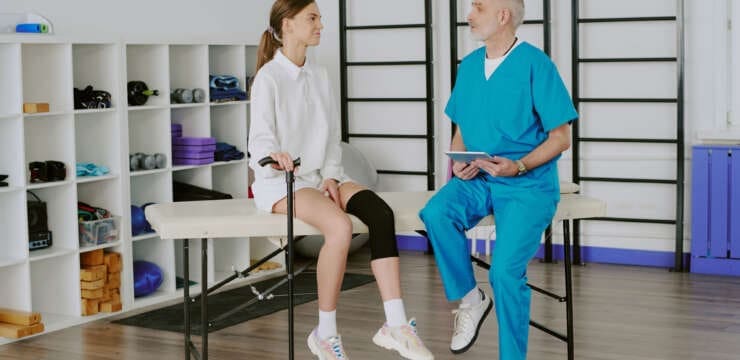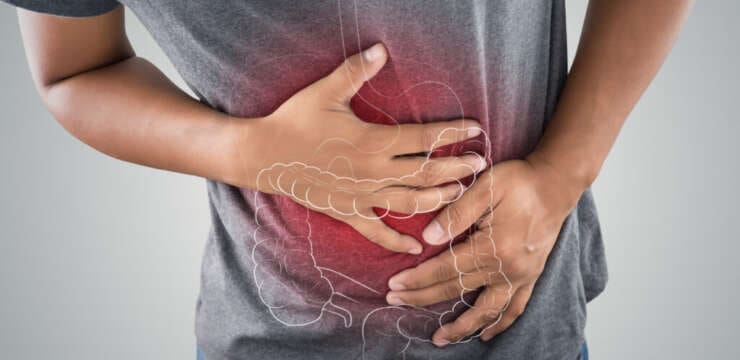
Table of Contents
Circulation You Can Feel: A Health-Coaching Plan That Uses Chiropractic & Integrative Care to Power Oxygen, Energy, and Healing

Why circulation is your body’s “energy highway”
Optimal circulation is the efficient delivery of oxygen and nutrients to cells and the removal of waste products through the heart, arteries, veins, and lymph system. When blood flow is smooth, cells produce energy, repair tissues, and maintain brain function. When flow slows, you may feel cold hands or feet, swelling, brain fog, slow recovery, and low energy (Henry Ford Health, 2025; British Heart Foundation, 2024).
Coaching takeaway: Improving blood flow enhances your overall well-being—enabling you to experience more oxygen, steadier energy, faster recovery, and improved focus.
(Henry Ford Health, 2025; British Heart Foundation, 2024)
How chiropractic alignment fits a health-coaching plan
Chiropractic care aims to restore spinal alignment and joint motion. This can reduce nerve interference that drives muscle guarding and poor posture. With calmer muscles and better posture, vessels and nerves can work with less pressure, supporting better blood flow (Elevation Health, 2023; Leigh Sierra Chiropractic, 2024; Rodgers Stein Chiropractic, 2025).
-
Nervous system reset: Clearer nerve signaling can support vessel tone and breathing mechanics.
-
Posture & space: Upright posture creates “room” for blood vessels and nerves to function properly.
-
Breathing mechanics: Freer ribs and diaphragm improve oxygen intake, which fuels circulation.
Coaching takeaway: Adjustments enhance the effectiveness of your movement practice, breathwork, and recovery (Peak Portland, 2025; LSM Chiropractic, 2024).
(Elevation Health, 2023; Leigh Sierra Chiropractic, 2024; Rodgers Stein Chiropractic, 2025; Peak Portland, 2025; LSM Chiropractic, 2024)
The integrative care stack: simple, proven circulation boosters
Health coaches help you build routines that you can actually follow. These habits multiply the benefits of alignment.
1) Movement targets you can keep
Global guidance recommends ~150 minutes/week of moderate activity (or ~75 minutes of vigorous activity) plus strength training on two or more days/week. You can split this into 10–20 minute blocks, such as brisk walking, cycling, swimming, or low-impact intervals (British Heart Foundation, 2024; NHS, 2022).
Micro-moves for busy days
-
Five “movement snacks”: 2–3 minutes each—march in place, calf raises, wall pushups, band pull-aparts, or sit-to-stands.
-
After-meal walks: 5–10 minutes to help blood sugar and circulation.
-
Stairs over elevators: small, steady wins.
(British Heart Foundation, 2024; NHS, 2022)
2) Soft-tissue work (massage or self-release)
Massage reduces tension and may increase local blood and lymph flow. It pairs well with adjustments and movement practice (UMN—Integrative Nursing, 2021/2024).
Try: A weekly 20–30 minute professional massage or a 10-minute home routine (foam roller, lacrosse ball) for calves, quads, hip flexors, and upper back.
(UMN—Integrative Nursing, 2021/2024)
3) Mobility + posture circuit (6–8 minutes)
-
Chin tucks (x8) and scapular squeezes (x12)
-
Thoracic extensions over a towel (x10 slow reps)
-
Hip openers: 30–45 sec per side
-
Ankle pumps/circles: 45–60 sec per side
Perform this exercise once in the morning and once in the mid-day to reduce compression on vessels and nerves (Henry Ford Health, 2025; British Heart Foundation, 2024).
(Henry Ford Health, 2025; British Heart Foundation, 2024)
4) Strength = your circulatory “second heart”
Muscles help pump venous blood back to the heart. Train the big movers twice weekly:
-
Lower body: squats/sit-to-stands, hip hinges, calf raises
-
Upper body: rows/band pull-aparts, presses/pushups
-
Core: carries, anti-rotation holds
Begin with a light approach; focus on maintaining consistent form (NHS, 2022; British Heart Foundation, 2024).
(NHS, 2022; British Heart Foundation, 2024)
5) Breath training that calms and oxygenates
Practice diaphragmatic breathing for 2–4 minutes, twice to three times daily. Inhale through the nose, feel the belly/ribs expand; exhale longer than you inhale. This can support oxygenation, reduce stress, and help vessel tone (UMN—Integrative Nursing, 2021/2024).
(UMN—Integrative Nursing, 2021/2024)
6) Hydration and nutrition foundations
-
Hydration: Aim for pale-yellow urine; increase intake with increased heat or physical activity.
-
Nutrition: Build your plate around lean protein, colorful vegetables, whole grains, and healthy fats. These choices support vessel health and recovery, maintaining steady energy levels (Dr. C. Kennedy Chiropractic, 2024).
(Dr. C. Kennedy Chiropractic, 2024)
A 14-day Health-Coach Kickstart for Better Circulation
Goal: Create momentum with small, repeatable wins.
Days 1–3: Start easy
-
Walk 10 minutes daily (comfortable pace).
-
Mobility + posture circuit once per day.
-
Breathe 2 minutes after lunch and before bed.
-
Hydrate: Drink one glass of water with each meal.
Days 4–7: Layer strength
-
Add two 20-minute strength sessions (using bodyweight or resistance bands).
-
After-meal walks 5–10 minutes (1–2 meals).
-
Massage or self-release for 10 minutes, twice this week.
Days 8–10: Expand capacity
-
Bring walks to 15–20 minutes in length.
-
Keep strength sessions and mobility.
-
Sleep duration: 7–9 hours; add a 10-minute wind-down period.
Days 11–14: Lock the habit
-
Reach ~150 minutes/week total movement.
-
Maintain 2+ strength days.
-
Keep breath + posture routines.
-
Plan “next 2 weeks” on a calendar to stay consistent.
Coaching frameworks that make it stick
SMART goals (example)
-
Specific: “Walk 15 minutes after lunch, Mon-Fri.”
-
Measurable: Track minutes with your phone.
-
Achievable: Start at your current fitness level.
-
Relevant: Better circulation ? more energy for work/family.
-
Time-bound: Reassess in 2 weeks.
Habit stacking
-
Anchor: After brushing teeth ? 2 minutes of diaphragmatic breathing.
-
Anchor: After morning coffee ? mobility circuit.
Friction control
-
Lay out shoes/bands the night before.
-
Two-minute rule: If you don’t feel like it, do two minutes anyway; momentum often follows.
Special focus: desk workers, active adults, and post-injury clients
-
Desk workers: Micro-moves hourly (calf raises, ankle pumps, shoulder rolls) keep blood flowing; posture resets cut vessel and nerve compression (British Heart Foundation, 2024).
-
Active adults: Strength keeps the “muscle pumps” strong; breath work improves oxygen delivery during training.
-
Post-injury clients: Chiropractic alignment, combined with massage and graded exercise, reduces guarding, restores motion, and helps tissues obtain the oxygen and nutrients they need to heal (Leigh Sierra Chiropractic, 2024; Rodgers Stein Chiropractic, 2025; Ford Chiropractic, 2024).
(British Heart Foundation, 2024; Leigh Sierra Chiropractic, 2024; Rodgers Stein Chiropractic, 2025; Ford Chiropractic, 2024)
Where an integrative clinic fits (and when to co-manage)
A health coach often collaborates with chiropractors, massage therapists, and other healthcare professionals to provide comprehensive care. This co-managed model supports safe progress and faster wins.
-
Chiropractic adjustments: reduce nerve interference and improve posture.
-
Massage/soft-tissue: reduce tension and support local blood/lymph flow.
-
Guided exercise: restores strength and venous return.
-
Acupuncture can be a helpful add-on for pain modulation and relaxation in certain cases.
-
Medical screening: if you have red-flag symptoms or complex conditions, involve your medical provider early.
Clinics like Dr. Alexander Jimenez, DC, APRN, FNP-BC in El Paso blend dual-scope evaluation, advanced imaging when needed, rehab, and documentation for injuries from work, sports, personal incidents, or MVAs—so care remains safe and coordinated while you build circulation habits (Jimenez, 2025a; 2025b; LinkedIn, n.d.).
(Jimenez, 2025a; Jimenez, 2025b; LinkedIn, n.d.)
Safety: When to see a clinician first
Seek prompt medical care for chest pain, sudden shortness of breath, one-sided leg swelling, fainting, or new neurologic deficits. If you have a history of vascular disease or are taking anticoagulants, consult a healthcare professional for guidance on engaging in physical activity and bodywork.
Frequently asked questions
Q: Can chiropractic alignment alone “fix” my circulation?
A: Alignment helps by reducing nerve interference and muscle tension that can limit blood flow. For most people, the best results are achieved through a combination of alignment, movement, soft-tissue care, breathwork, hydration, and sleep (Elevation Health, 2023; UMN—Integrative Nursing, 2021/2024; British Heart Foundation, 2024; NHS, 2022).
Q: How long until I feel warmer hands or more energy?
A: Often days to weeks, especially when you add after-meal walks, posture resets, and breath work (Henry Ford Health, 2025).
Q: What are the simplest first steps?
A: Two: after-meal 10-minute walks and a 6–8 minute mobility + posture circuit daily. Pair with water at every meal.
Q: Do I need a massage, or can I self-release?
A: Either helps. A professional can target stubborn areas; self-release helps maintain tension between sessions (UMN—Integrative Nursing, 2021/2024).
Q: I was hurt in a crash. Should I change this plan?
A: Get evaluated first. After clearance, your coach and chiropractor can tailor the plan and safely progress the load. Dual-scope clinics can coordinate imaging and documentation when appropriate (Jimenez, 2025a; 2025b).
Quick checklist (print or save)
-
? 150 minutes/week moderate activity (or 75 vigorous)
-
? Strength training 2+ days/week
-
? Mobility + posture circuit twice/day
-
? Diaphragmatic breathing 2–4 minutes, 2–3x/day
-
? After-meal walks 5–10 minutes
-
? Hydration strategy (water at every meal)
-
? Weekly massage or 2x self-release
-
? Sleep wind-down routine (10 minutes)
References
-
British Heart Foundation. (2024, July 19). Cold hands and feet? 5 tips to improve circulation.
-
Dr. C. Kennedy Chiropractic. (2024). Chiropractic care and fitness goals.
-
Elevation Health. (2023, August 4). How does chiropractic care improve blood circulation?.
-
Ford Chiropractic. (2024). Regular chiropractic adjustments can improve overall body function.
-
Henry Ford Health. (2025, August 18). How to boost your circulation (and why it’s important!).
-
Jimenez, A. (2025a). Dr. Alex Jimenez—Clinical site.
-
Jimenez, A. (2025b). El Paso injury chiropractor: Your recovery partner.
-
Leigh Sierra Chiropractic. (2024, April 2). Chiropractic adjustments for circulatory health.
-
LinkedIn—Dr. Alexander Jimenez. (n.d.). Profile.
-
LSM Chiropractic. (2024, April 25). Chiropractic care for enhancing energy levels.
-
NHS. (2022). Physical activity guidelines for adults (19 to 64).
-
Peak Portland Chiropractic. (2025, March 14). 10 surprising benefits of chiropractic care.
-
Rodgers Stein Chiropractic. (2025, May 7). How adjustments support your immune system.
-
UMN Earl E. Bakken Center for Spirituality & Healing. (2021/2024). Principles of integrative nursing.
Disclaimers
Professional Scope of Practice *
The information herein on "Integrative Chiropractic Circulation Support and Wellness" is not intended to replace a one-on-one relationship with a qualified health care professional or licensed physician and is not medical advice. We encourage you to make healthcare decisions based on your research and partnership with a qualified healthcare professional.
Blog Information & Scope Discussions
Welcome to El Paso's wellness blog, where Dr. Alex Jimenez, DC, FNP-C, a board-certified Family Practice Nurse Practitioner (FNP-C) and Chiropractor (DC), presents insights on how our team is dedicated to holistic healing and personalized care. Our practice aligns with evidence-based treatment protocols inspired by integrative medicine principles, similar to those found on dralexjimenez.com, focusing on restoring health naturally for patients of all ages.
Our areas of chiropractic practice include Wellness & Nutrition, Chronic Pain, Personal Injury, Auto Accident Care, Work Injuries, Back Injury, Low Back Pain, Neck Pain, Migraine Headaches, Sports Injuries, Severe Sciatica, Scoliosis, Complex Herniated Discs, Fibromyalgia, Chronic Pain, Complex Injuries, Stress Management, Functional Medicine Treatments, and in-scope care protocols.
Our information scope is limited to chiropractic, musculoskeletal, physical medicine, wellness, contributing etiological viscerosomatic disturbances within clinical presentations, associated somato-visceral reflex clinical dynamics, subluxation complexes, sensitive health issues, and functional medicine articles, topics, and discussions.
We provide and present clinical collaboration with specialists from various disciplines. Each specialist is governed by their professional scope of practice and their jurisdiction of licensure. We use functional health & wellness protocols to treat and support care for the injuries or disorders of the musculoskeletal system.
Our videos, posts, topics, subjects, and insights cover clinical matters, issues, and topics that relate to and directly or indirectly support our clinical scope of practice.*
Our office has reasonably attempted to provide supportive citations and has identified the relevant research studies or studies supporting our posts. We provide copies of supporting research studies available to regulatory boards and the public upon request.
We understand that we cover matters that require an additional explanation of how they may assist in a particular care plan or treatment protocol; therefore, to discuss the subject matter above further, please feel free to ask Dr. Alex Jimenez, DC, APRN, FNP-BC, or contact us at 915-850-0900.
We are here to help you and your family.
Blessings
Dr. Alex Jimenez DC, MSACP, APRN, FNP-BC*, CCST, IFMCP, CFMP, ATN
email: coach@elpasofunctionalmedicine.com
Licensed as a Doctor of Chiropractic (DC) in Texas & New Mexico*
Texas DC License # TX5807
New Mexico DC License # NM-DC2182
Licensed as a Registered Nurse (RN*) in Texas & Multistate
Texas RN License # 1191402
ANCC FNP-BC: Board Certified Nurse Practitioner*
Compact Status: Multi-State License: Authorized to Practice in 40 States*
Graduate with Honors: ICHS: MSN-FNP (Family Nurse Practitioner Program)
Degree Granted. Master's in Family Practice MSN Diploma (Cum Laude)
Dr. Alex Jimenez, DC, APRN, FNP-BC*, CFMP, IFMCP, ATN, CCST
My Digital Business Card






